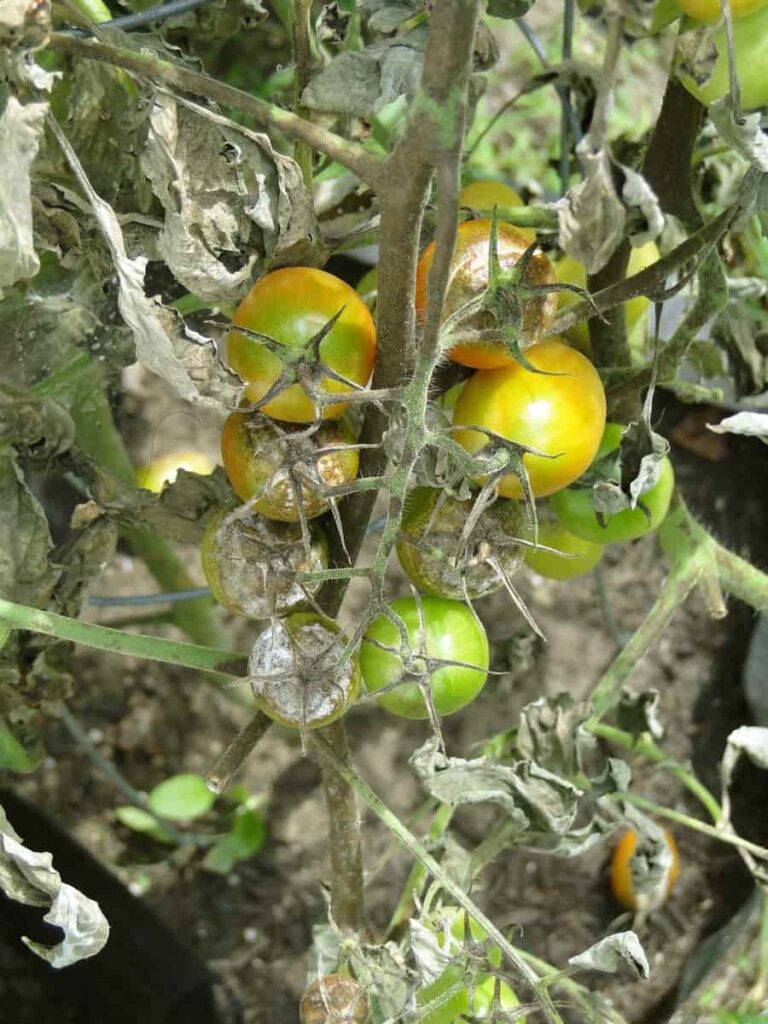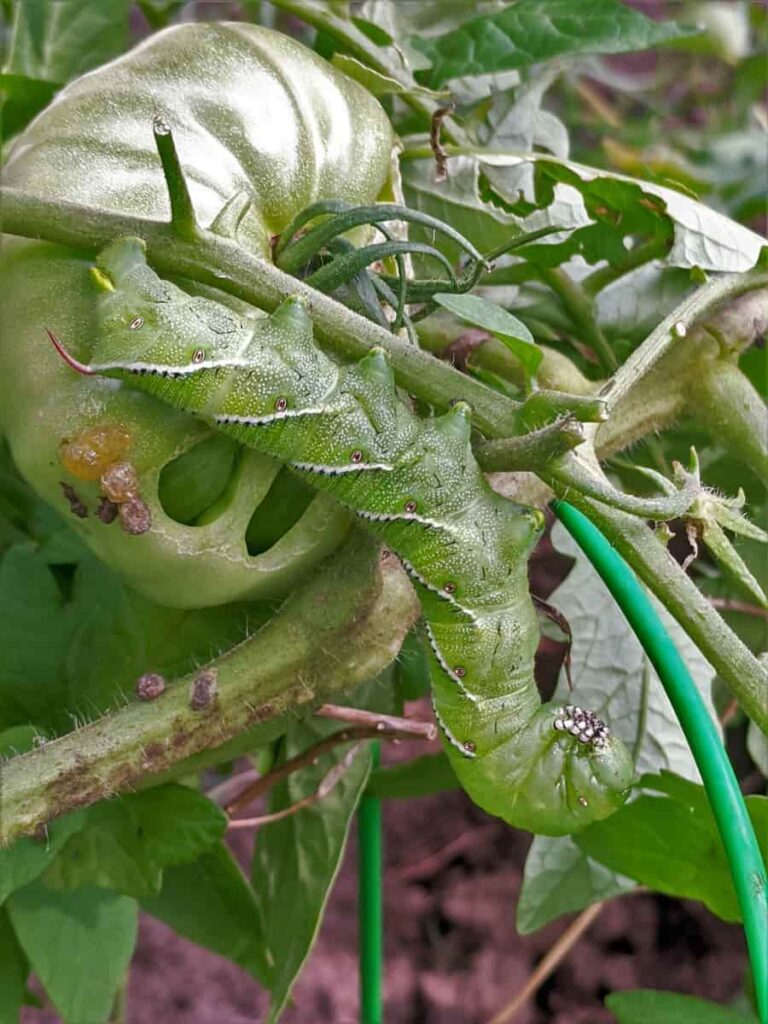Agriculture’s most profitable business is tomato cultivation. After potatoes, it is the second most important crop in the world. Cultivating Tomatoes is an excellent option for those looking to harvest a commercially important crop four times a year. Tomato is a significant vegetable crop for both income and nutrition. Tomatoes are predominantly summer crops but can be cultivated throughout the year. Its fruit contains vitamins like ‘A’ and ‘C’ and antioxidants in abundance quantity.
Due to the unique properties contained in its fruit, tomato demand remains almost the same throughout the year. To produce that perfect tomato, be alert. Keep an eye on your plant’s health, look for larvae and other insects, and watch for signs of disease. And if you find them, come here for advice on what to do. Remember: part of a quick reaction is having the most efficient tools, products, and methods ready for when trouble shows its head. Be prepared.
How to control pests and diseases in Tomato crop
Pests in Tomato farming
Aphids
These are those dense clusters of tiny insects you may see on your tomato plants’ stems or new growth. Although similar in size, about 1/8 inch, these aphids vary in appearance. Pear-shaped tomato aphids can be solid pink, green and pink mottled, or light green with dark stripes.
It has a long slender pair of tail-like appendages (cornicles). The green peach aphid is pear-shaped and pale yellow to green. Large infestations can gradually injure or even kill plants. So instead, pinch off foliage where aphids are densely concentrated, and throw these discarded bits into the garbage, not on the ground.
Damage symptoms
- Symptoms of an aphid infestation include stunted leaves that are misshapen or curling around the edges. In addition, these pests suck out sap and nutrients from leaves and stems, making them unable to grow properly.
- Aphids are visible to the naked eye, but they can still be pretty small, making them difficult to see quickly.
- The aphids produce honeydew, a clear, sticky substance that coats the areas where they have been.
- Sugary honeydew attracts ants, so if you see ants on or around tomato plants, you may have an aphid infestation.
- It might also be a sign if the leaves or stems of your plants appear black. Sooty mold can grow on the honeydew that aphids secrete, causing the plants to appear black.
In case you missed it: How to Grow Tomato Plants Faster: Best Tips to Increase Flowering, Fruiting, and Production Yield
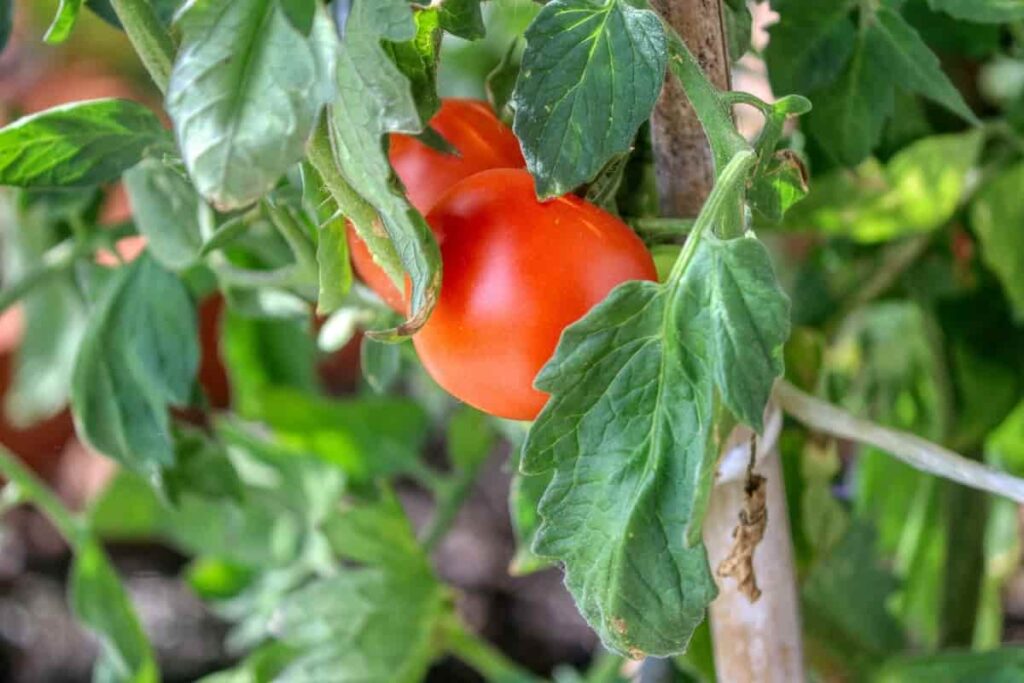
Biological control
- Ladybugs, lacewings, and parasitic wasps are great predators in your crop, and they love eating aphids.
- Wipe or spray the plant’s leaves with a mild solution of water and dish soap to control aphids. For two weeks, soapy water should be reapplied every 2-3 days.
- Insecticidal soaps, neem oil, and horticultural oils are effective against aphids. The substances must, however, come into contact with the aphids to work. Follow the instructions on the packaging for application.
Chemical control
- Insecticides are available to control aphids, including foliar-applied formulations of malathion, permethrin, and acephate. Even though these materials may kill more aphids than soaps and oils,
- These chemicals should be limited since they kill the natural enemies that control aphids and other pests and are associated with bee deaths and environmental problems. Repeated application of these materials may also lead to resistance.
Cutworm
Cutworms’ larvae are found in various colors and patterns, but they are always smooth-skinned. Typically, cutworms reach a length of 1 to 2 inches when fully grown. When disturbed, they usually curl up. The majority of cutworm activity occurs at night. Cutworms hide in soil and debris at the base of plants during the day. Small, grub-like caterpillars feed on young plant stems at night, frequently destroying seedlings by eating them through from the ground up.
Damage symptoms
- Cutworms cause stand loss by cutting off seedlings or recently transplanted tomato plants early in the season.
- Tomatoes can also be injured later in the season by eating irregular holes in their surfaces; tomatoes touching the ground are generally the most seriously affected.
Biological control
The most effective and least harmful to natural enemies, honey bees are at the top of the table.
- Release Braconid and Trichogramma wasps and tachinid flies into the main field, as these all attack cutworms.
- You can also use beneficial nematodes to help keep populations under control. Parasitic nematodes should be applied in the morning or evening to be the most effective.
- Birds and bats will also eat the adults.
Chemical control
- Apply spinosad when eggs first hatch to target young larvae. Heavy infestations need a second application in 4 or 5 days.
- Apply carbaryl as ground application. Do not spray directly or allow it to drift onto blooming crops or weeds where bees are foraging.
- Use methomyl only when cutworms are detected feeding on fruit. Good coverage by ground application is necessary to reach the soil surface and lower fruit in the plant canopy.
- Consider air and water quality, resistance management, and the pesticide’s properties and application timing when choosing a pesticide. Reading the product’s label before using it is always a good idea.
- Spray carbaryl 50 WP at 2.5 kg per hectare, quinalphos 20 EC at 2 liters per hectare, or phoshalone 35 EC at 1.25 liters per hectare.
In case you missed it: Why are my Tomatoes Rotting on the Bottom and Top: Blossom End Rot, Symptoms, Remedies, and Solutions
Whitefly
Whiteflies are sucking insects that can transmit viruses to plants. Adults are tiny white flies about 1 mm long. The body and wings are covered in a powdery, waxy secretion, white to slightly yellowish. Each female lays up to 150 eggs. Eggs are attached to the underside of leaves, usually younger leaves. Viruses are mainly spread from plant to plant by active adult whiteflies. While feeding and sucking sap from virus-infected plants, whiteflies acquire the virus. It takes 18 to 28 days for an egg to become an adult in warm weather. In cold weather, it takes 30 to 48 days.
Damage symptoms
- Whiteflies feed on the leaf undersides, removing so much sap that plants become severely weakened.
- A large number of chlorotic spots can be seen on infested leaves. Yellow spots grow together, forming different-sized yellow areas.
- Only the veins remain green in severe cases. The leaves of some plants appear completely brown and dried. Black mold may be found on leaves and stems, causing wilting and leaf drops
Biological control
- Spray wash your plants with a soapy solution, especially the underside of the leaves where the insects live. This method kills adult insects by suffocating them with a coat of soap.
- Yellow sticky pads are a wonderful control and monitoring method. Hang a yellow cardboard or yellow piece of wood with a very sticky substance applied to it.
- Natural predators are one good way to keep pest populations under control, and ladybugs are one of the most effective whitefly hunters, with parasitic wasps and lacewings also proving valuable allies.
Chemical control
- Spray fenitrothion 50 EC at 2 liters per hectare (1000 lit spray fluid)
- Spray thiamethoxan 25 WG at 125 grams per hectare, 750 liters of spray fluid.
- Spraying acephate 2 grams per liter of water. The spray has to be repeated after a month to kill the nymphs emerging from eggs
- Application of chlorpyriphos at 1250 liter spray fluid by using a hand sprayer
Root-knot nematode
The life cycle of most plant parasitic nematodes consists of an egg, four larval stages, and an adult male and female. Their size is microscopic. A larvae’s first molt occurs within the egg during its first stage of development. In some cases, second-stage larvae infect foliar tissues or roots of plants after hatching from eggs. Temperatures between 21°C and 27°C are optimal for nematode development.
Damage symptoms
- Plants wilt rapidly, especially under dry growing conditions, and are often stunted.
- Growth may be retarded, and leaves may be chlorotic.
- In cases where seedlings infestation has taken place, numerous plants die in the seedbed, and seedlings do not survive transplanting.
- Flowering and fruit production are strongly reduced in those plants that survive.
- Roots branch profusely from the gall tissue causing a “beard root” symptom. Infected roots become knobby and knotty
- Plants wilt during the hot time of the day, especially under dry conditions, and are often stunted
Biological control
- Only seedlings with roots free of galls should be selected for transplanting.
- Proper weed control and crop rotation with non-hosts or resistant crops
- Destruction of galled roots after harvest and soil solarization with clear plastic tarps during summer.
In case you missed it: How to Grow Tomatoes from Seeds: Starting from Scratch, A Beginners Guide to Indoors, Outdoors, and in Pots
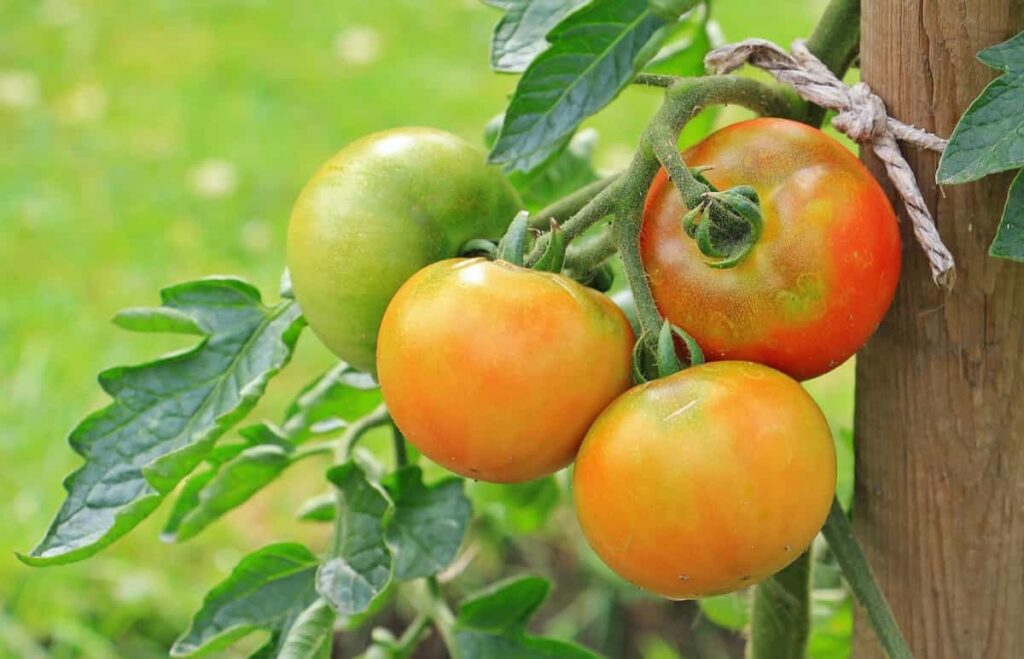
Chemical control
- Application of Pseudomonas fluorescens at 10g/m2 in nursery
- Application of carbofuran 3G at 1kga.i./ha (33 kg/ha).
Tobacco caterpillar
It is widely spread throughout the subtropical and tropical parts of the world in India. Besides tobacco, it feeds on cotton, castor, groundnut, tomato, cabbage, and other cruciferous crops. The adult moths are stout and pale brown. The forewings are greyish brown with white markings.
The caterpillars are also stout and cylindrical. They are 40–50 mm long and pale brown with a greenish-violet tinge when fully grown. They are smooth and velvety. They possess sub-marginal narrow yellow spots with black lunules above them. A black band is found around the body on the anterior and posterior ends.
Damage symptoms
- In the beginning, the caterpillars are gregarious and scrape off the chlorophyll content of the leaf lamina, giving it a papery white appearance. Eventually, they become voracious feeders, making irregular holes in the leaves.
- Veins and petioles are the only parts of the leaf that remain after skeletonization and initial irregular holes on the leaves
- Fruits with irregular holes and heavy defoliation
Biological control
- Plow the soil to expose and kill the pupae
- Pheromone traps (Pherodin SL) at 15 per hectare to attract male moths
- Handpick grown-up larvae and kill them
- Release and encourage the visiting of natural predators like braconid wasps, dragonflies, spiders, praying mantis, Polistes stigma, Andrellus spiders in the main field.
Chemicals control
- Synthetic pyrethroids fenvalarate 20 EC at 0.5 ml per liter, cypermethrin 10 EC, or decamethrin 2.8 EC at 0.5 ml per liter is also effective.
- For grown-up caterpillars, poison bait (Wheat bran, jaggery, and monocrotophos at 20kg + 2kg + 250 ml) can also be used.
- Spray nuvaluron 10 EC at 1 ml per liter or lufenuron 50 EC at 1 ml per liter or lambda cyhalothrin 5 EC at 0.5 ml per liter.
Diseases in Tomato farming
Damping Off
Caused by several viruses, damping off disease is a tomato problem that affects young, seemingly healthy seedlings that suddenly develop a dark lesion at the soil line, then quickly wilt and die. Cool, damp soil, overwatering and overcrowding all increase probability of infection. Use clean potting soil and germination trays and tools to reduce the incidence, avoid crowded seed beds, and monitor watering carefully during the first two weeks after sprouting.
Damage symptoms
- Damping off tomato occurs in two stages, i.e., pre- and postemergence phases.
- Before the seedlings reach the soil surface, they are killed in the pre-emergence phase.
- Seedlings are completely rotting, and the young radical and plumule are dead.
- The postemergence phase is characterized by young, juvenile collar tissue infection.
- Soft, water-soaked tissues result from infection. As a result, the seedlings topple over or collapse.
Chemical control and Management
- Treat the seeds with Trichoderma asperellum at 4 g/kg or Pseudomonas fluorescens at 10 grams per kg of seeds 24 hours before sowing
- Apply P. fluorescens to the soil at 2.5 kg per hectare with 50 kg of farm yard manure. Avoid stagnation of water.
- Drench with copper oxychloride at 2.5 grams per liter at 4 liters per sq.m.
- Use raised seed bed and give light but frequent irrigation for better drainage.
Septoria leaf spot
There is a very common tomato disease called septoria leaf spot. Tomatoes and other varieties in the Solanaceae family, especially eggplant and potatoes, are susceptible to this fungus, Septoria lycopersici, just about anywhere in the world. Although the Septoria leaf spot is not necessarily fatal for your tomato plants, it spreads rapidly. It can quickly defoliate and weaken the plants, rendering them unable to bear fruit to maturity.
Damage symptoms
- There are small, round or irregular spots on leaves with a gray center and a dark margin. The spots usually appear on lower leaves and progress upwards.
- Spots coalesce, and leaves become blighted. Occasionally, leaves, stems, and flowers are completely defoliated.
- Through a magnifying lens, you can see the fruiting bodies of the fungus, which look like dark brown pimples.
- If untreated, it will cause the leaves to turn yellow and eventually dry out and fall off. It will weaken the plant, send it into decline, and cause sun scalding of the unprotected, exposed Tomatoes.
In case you missed it: How to Grow Tomatoes in Michigan: Planting to Harvesting Guide
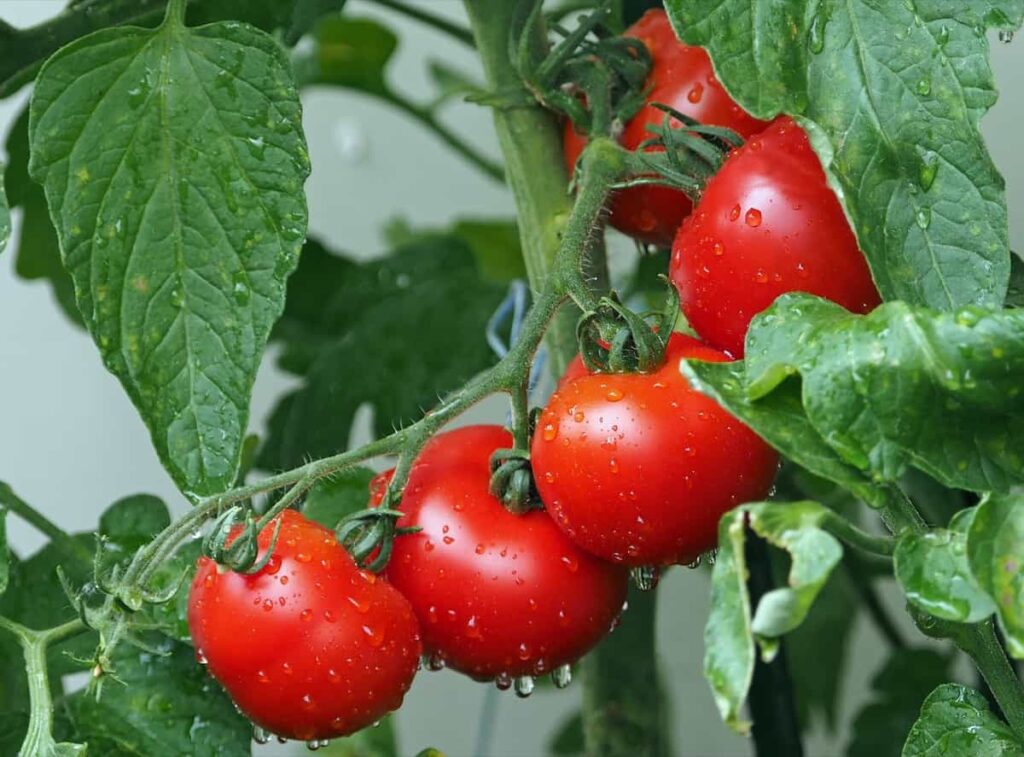
Chemical control and Management
- Remove infected leaves immediately, and thoroughly wash your hands and pruners before using them on uninfected plants.
- The spread of the disease can be prevented by using fungicides containing copper or potassium bicarbonate. As soon as the first symptoms appear, spray immediately and follow the directions on the label.
- Fungicides containing maneb, mancozeb, and chlorothalonil control the Septoria leaf spot. Apply at 7 to 10-day intervals throughout the season, mainly during flowering and fruit sets.
Early blight
It is a common disease of Tomatoes occurring on foliage at any growth stage. Early blight is caused by fungal pathogens Alternaria solani and A. tomatophila, which survive between crops on infected crop residues and host weeds. These fungi can also be carried on tomato seeds.
Early blight is common on Tomatoes and causes direct losses by the infection of fruits and indirect losses through leaf lesions, which reduce plant vigor. Warm temperatures and periods of leaf wetness from frequent rain, overhead irrigation, or dew favor the disease. The fungal spores can be spread through wind and rain, irrigation, insects, workers, and tools and equipment.
Damage symptoms
- The first signs of early blight appear as small, black lesions, primarily on older foliage.
- When spots reach one-fourth inch in diameter or larger, concentric rings can be seen in a bull’s eye pattern in the center of the diseased area.
- Spots may cause yellowing of the surrounding tissue. The foliage is killed if temperatures and humidity are high during this time of year.
- The stems can be affected by the same lesions as the leaves, sometimes girdling the plant if the lesions are too close to the soil line.
- When transplants are set into the field, they often die from late blight fungus infection. As well as infecting the fruit, the fungus attaches itself to the stem or calyx.
- Large lesions usually cover nearly the entire fruit; concentric rings are also present.
Chemical control and Management
- Planning to grow tolerant varieties in the high-risk early blight disease incidence season.
- Maintain better spacing and proper staking for air circulation, especially in the moist season.
- Provide only sufficient irrigation and avoid unnecessary supply of irrigation water.
- Avoid intercultural activities during moist days to stop spreading through tools and humans.
- The below chemical fungicides can give better control of this disease
| Chemical compound | Dosage (Per liter) |
| Copper oxychloride | 2-3 grams |
| Copper Hydroxide | 2 grams |
| Azoxystrobin+ Tebuconazole | 1 ml |
| Metalaxyl + Chlorothalonil | 2 ml |
| Chlorothalonil | 2 grams |
| Copper EDTA 12 % | 0.5 grams |
Leaf curl
The tomato crop is grown worldwide in both summer and winter, and plant viruses are a major threat to tomato production. The tomato leaf curl virus (TLCV) causes considerable crop yield loss among these viruses. This virus is transmitted by a whitefly (Bemisia tabaci) vector. This study evaluated the effect of TLCV infection on the following tomato growth and yield parameters: plant leaf number and area, plant biomass, plant height, root length, and plant stem diameter and yield.
Damage symptoms
- There are several symptoms of leaf curl disease, including severe stunting of the plants, downward rolling of the leaves, and crinkling of the leaves. Newly emerging leaves show slight yellow coloration, and later they curl.
- Leathery, brittle leaves develop with age. Therefore, the size of the nodes and internodes is significantly reduced.
- It causes the plants to look pale and produce more lateral branches, giving them a bushy appearance. Plants infected with the disease, however, remain stunted.
In case you missed it: Soil Preparation for Tomato Plants: Best Soil Mix, pH, Compost, and the Recipe

Chemical control and Management
- Install yellow sticky traps at 12 per hectare to attract the adult.
- Raise barrier crops-cereals around the field.
- Removal of weed host. Protected nursery in net house or greenhouse.
- Use any of the following to control the leaf curl disease in Tomatoes.
| Chemical compound | Dosage |
| Carbofuran 3 CG | 40 kg/Ha |
| Dimethoate 30 EC | 1 ml/L |
| Malathion 50 EC | 1.5 ml/L |
| Methyl demeton 25 EC | 1 ml/L |
| Thiamethoxam 25 WG | 4 ml/10L |
| Imidacloprid 17.8 SL | 3 ml/10L |
Conclusion
These pests and diseases significantly affect the yield and yield quality. By applying modern cultivating techniques and cultivating disease-resistant varieties, disease occurrence can be prevented up to some extent. If your plants are affected by any pest or disease, they should be controlled initially to avoid loss.
- How to Grow Tomatoes Organically at Home: A Comprehensive Guide
- Organic Gardening on a Budget: Low-Cost Methods and Materials
- Gongura Seed Germination and Planting Methods
- Cabbage Seed Germination and Selection
- Broccoli Seed Germination and Selection
- Asparagus Seed Germination and Variety Selection
- Seasonal Flower Gardening: Best Practices for Spring, Summer, Fall, and Winter
- How to Grow Hibiscus from Flower
- Plantation Ideas for Home Decoration: A Beginners Guide
- Flower Garden Designs and Layouts for Beginners
- Planting and Spacing Techniques in Papaya: A Beginner’s Guide
- Growing Gold: Essential Techniques for Planting Pineapples
- How to Make Kalanchoe Plant Bushy: Home Remedies and Solutions
- 11 Reasons Why Your Gardenia is Not Blooming: Home Remedies and Solutions
- Eco Elegance: The Guide to Designing a Drought-Tolerant Landscape
- Gardening on a Slope: Strategies for Hillside Landscaping
- Nourish and Flourish: Top Organic Mulches for Thriving House Plants
- Everything You Want to Know about Indian Mogra Flower: Discover Uses and Growing
- Green Thumb Success: Expert Tips for Cultivating Greenhouse Pumpkins All Year Round
- Maximize Growth & Flavor: The Ultimate Guide to Companion Planting in Herb Gardens
- How to Control Rhododendron Problems Naturally: Home Remedies and Organic Ways to Fix Them
- Natural Magic: The Remarkable Benefits of Cinnamon for Plants
- Best Steps to Revive Dying Tulip with Natural and Organic Treatment
- 10 Reasons Why Your Angel Trumpet is Not Blooming: Remedies and Treatment
- How to Fix Periwinkle Leaf and Flower-Related Problems: Natural Remedies and Solutions
- How to Fix Zinnias Leaf and Flower Problems: Discover Natural and Home Remedies
- Organic Steps to Induce Lemon Tree Flowers: A Comprehensive Guide
- Bloom Booster: Crafting the Perfect Homemade Bougainvillea Fertilizer
- Optimizing Growth: A Guide to Applying NPK Fertilizer for Potted Plants
- 10 Best Homemade Fertilizers for Rubber Plant: DIY Recipes and Application Method
- How to Boost Female Pumpkin Flowers: Effective Steps for More Flowers and High Yields
- Transform Your Indoor Garden: Top Benefits of Pink Salt for Houseplants
- 10 Best Homemade Fertilizers for Peacock Plants (Calathea): Easy DIY Guide
- Unlock Blooms: 9 Reasons Why Your Potted Chrysanthemum is Not Blooming
- 8 Reasons Why Your Potted Hibiscus is Not Blooming: Fix it with Simple Solutions
- Unlock Blooms: 9 Key Reasons Your Potted Frangipani Won’t Flower
